28 Apr. 2017
India Tour 2017 Report Takumi Hanaoka ( UTokyo )
| ・affiliation | :Civil Engineering, the University of Tokyo |
|---|
| ・duration | :March 12th-20th, 2017 |
|---|
| ・program | :India Tour 2017 |
|---|
Incredibly incredible India
3/12 ~Go to India~
Our airplane delayed because of the maintenance and changing the plane, so we waited for about 3 years. Therefore, our arrival time at IIT Delhi was around 12 PM. We stayed at Faculty Guest House in the campus. The faculty of it was not so good. The bed was comfortable for me, but the bathroom was poor. And I paid attention to tap water because, in India, it is said that the tap water was harmful for Japanese, so I used the bottled water when brushing, drinking, and rinsing out my mouth.
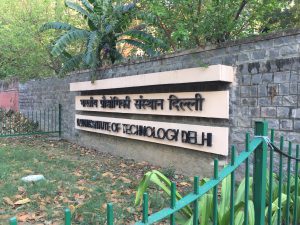
The entrance
3/13 ~Walking around the campus and taking part in Holi festival~
Mr. Lav the Ph.D. student IIT Delhi, came and showed us the campus. When we were walking, students walked up to me, and they painted us! This was the Holi festival at that time. In this festival, people celebrate spring coming and people paint other people. We went Me, Lav’s hostel, then in the yard students were sprinkling other people with water, painting friends and dancing with music. There were some DJs. First we were overwhelmed by the power of IIT students, but at last, we danced together with shout. My face remained red for three days because of ink.
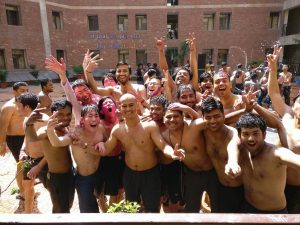
Holi Festival
3/14 ~Class in IIT Delhi and looking their labs~
We participated in the class (perhaps for Bachelor 3rd) in IIT Delhi. Some teachers didn’t appear in the classroom. It was what is called ‘the time in India.’ Then the class started. The class was interesting because the contents were similar to that in Japan but the lectures were held in English. I could fully understand if Japanese was used in the class, but I wasn’t able to understand many of contents. The teacher and students spoke so fast and also I didn’t know many technical terms. This was shocked to me. Which students would the companies like to need? I could not help thinking that the answer was Indian students. It may be true that Japanese don’t yield to them in several points, but they were better than Japanese in saying what they thought. Namely, they were good at the output. In this way, I felt it was important to be able to use English. Now I believe that much of the class should be held in English when the students are Bachelor (In many master course, students use English), though I protested to it.
After having lunch, we observed their laboratories, which were related to civil engineering. For example, concrete structures laboratory, materials research laboratory and so on. I am interested in transportation so I was looking forward to visiting transportation laboratory, but because of lacking members, we didn’t visit there, unfortunately. In general, labs and companies have stronger connection than in Japan and the labs are asked to research something. Colleges take a role of consulting companies. The faculty of the labs was quite poor.
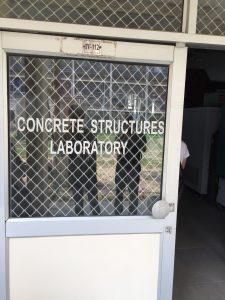
The door of the laboratory
3/15 ~ Class and presentation in Delhi ~
In this day, we also joined the class. Of course it was difficult to able to understand, but I was able to understand better than yesterday, and, I tried asking them to tell me one more time, which was the change of me. I was gaining confidence in communicating with foreign people.
In evening, we visited the Todai office in India. The chief representative of there, Mr.Yoshino, told me about India such as culture, thought, religion and economy in India. For supper, he took us into Japanese restaurant. It was nice Tendon!

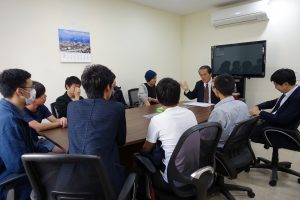
Classroom Todai Office
3/16 ~Delhi Metro and Honda~
In the morning, we went to a part period of Delhi Metro which was under construction. It was precious time because the new Metro in Japan is not planed now, so we cannot see the construction site of the metro. The shield tunnel is used. The site was neat, I thought, but it seemed that the staffs are lazy, though it is said that one of the most important factors of realizing Delhi Metro is to change the attitude of Indian’s workmen. I thought it was difficult to change the mind of labors in India.
After that, we visited the factory of Honda in India. The president of Indian Honda graduated in our department, so he coordinated this tour. Thanks to him, the chief of factory showed us around. We were able to see where we cannot enter in Japanese factories. The chief told us about the aim for Honda to realize. Soichiro Honda is famous president in Japan and it is well known that his philosophy is enthusiastic and stimulating. That philosophy also exists in India. If people in Delhi had this spirits, this country would change better. I hope workmen in Delhi Metro should
know it. On the other hand, in Japan, that thought starts to be regarded as old one. Should we change the thoughts against business as the economy are growing? Does not the essential of business change? It is difficult problem.
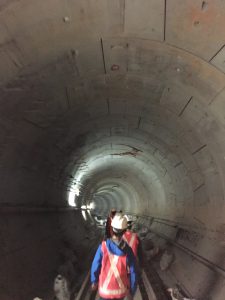
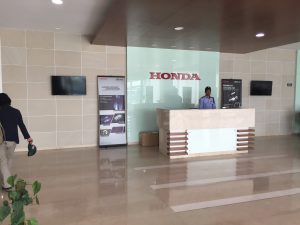
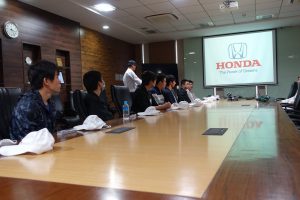
Inside Delhi Metro Entrance of HONDA Conference Room in HONDA
3/17 ~Japan International Consultants and JICA~
Japan International Consultants (JIC) is a new company for consulting high-speed railways in India. This company was founded after India decided to adopt Japanese Shinkansen. The staff came from Japanese companies such as Japan Railway East, Nippon Koei and Oriental consultants. We had prepared our presentation for this visit, and made a presentation in front of them. In that presentation, we explained the risk if India adopted the Shinkansen system exactly as it was, and suggested the solutions. After that, they commented about suggestions in our presentation.
In the afternoon, we visited the JICA office in India. On the way to go there, Ms.Furuhashi, a staff of JICA and graduator of our department came to see and showed us around the city of Delhi. I was surprised to see the sight of Chawri Bazar. There were many cables along the houses. The staff said that they were for stealing electricity, what was called ‘theft.’ There were many people. Some people sat, some were lying, and others sold some foods. There were many vehicles such as cars, taxis and auto rickshaws (three-wheeled taxi). We could always hear beeps. That city was ‘chaos.’ On the other hand, I felt enormous energy and potential.
After we arrived at the office of JICA, Ms. Furuhashi explained the activities of JICA India, and the chief representative, Mr. Sakamoto, explained not only the activities in India, but also philosophy in JICA. I was impressed and was able to understand the spirit of JICA.

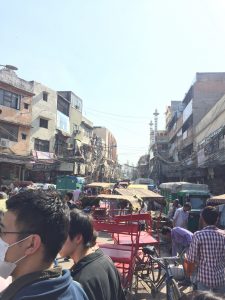

JIC Chawri Bazar JICA Office in India
3/18, 3/19 Sightseeing such as Taj Mahal and Red Fort
After we finished main activities, we went to some world heritages such as Taj Mahal and Red Fort. Also, I went to bazars on the street. By both experiences, I could know culture and tradition in India.
総括
インドと日本の高速鉄道での関係、そしてインドとはどういう国かを視察しに行ったわけだが、日本、そしていま自分が置かれている状況を客観視することが出来た。総括として、前者は英文で触れたので後者について和文で書く。
その瞬間瞬間を存分に楽しんでいるインド人を見てどことなく羨ましく感じ日本人の性格について考えさせたり、インドで働く日本人の苦労とやりがいに触れたり、そしてとりわけ同年代のIIT生で、自分よりはるかに大きく自分のフィールドを設定している姿に感銘を受けるのと同時に、自分の視野の今までの狭さに落胆したりした。今回の研修は、インドの高速鉄道の視察だったが、それ以上のものを得られた。これらはきっと自分の今後のキャリア形成に影響を及ぼすだろう。このプログラムを皆に勧めたい。

